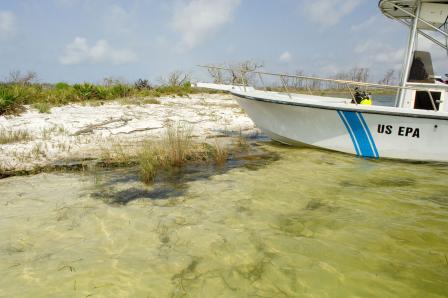Tools to Evaluate and Manage Beach Health

- Sanitary Surveys and EPA's app
A sanitary survey is a method of investigating the sources of fecal contamination to a water body. Sanitary surveys help state, territorial, and tribal managers, of beach and other waterbody programs, and public health officials: identify sources of water pollution; assess the magnitude of pollution; and identify priority locations for water quality monitoring or remediation. Recreational water sanitary surveys involve collecting information at the beach or waterbody, as well as on the surrounding land.
EPA has developed routine and more comprehensive annual sanitary surveys for both fresh and marine waters. In addition, EPA has updated its recreational sanitary survey app, EPA Sanitary Survey App for Marine and Fresh Waters, which helps waterbody managers evaluate and share all contributing waterbody and watershed information, to include all four sanitary survey forms.
- Monitoring
Monitoring the water at beaches helps beach managers know how clean the water is for recreation. Monitoring methods help beach managers identify levels of fecal bacteria that indicate conditions that might harm swimmers in recreational waters. These methods also help beach managers detect and prevent marine debris.
- Predictive Models
Predictive models are useful tools for beach managers to protect the health and safety of the public. Models can be used in conjunction with beach water quality monitoring to determine whether a beach is safe for recreational uses.
- Analytical Methods
The Clean Water Act requires that municipalities and industries analyze the chemical, physical and biological components of wastewater, which is carried eventually to our coasts. EPA publishes laboratory analytical methods, or test procedures, for conducting these tests. Most of these methods are published as regulations in the Code of Federal Regulations (CFR) at Title 40 Part 136. The link to Analytical Methods above provides methods for analyzing biological pollutants in ambient water. It also includes rapid microbiological methods for ambient waters and videos about a rapid method for monitoring pathogen indicators called qPCR.
